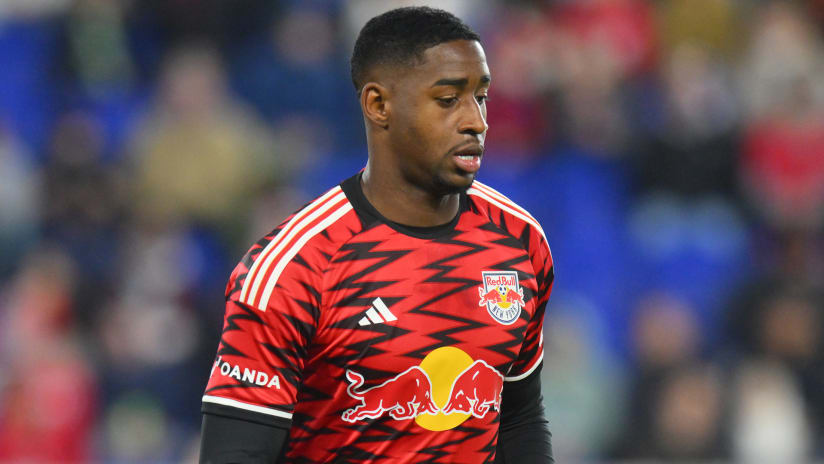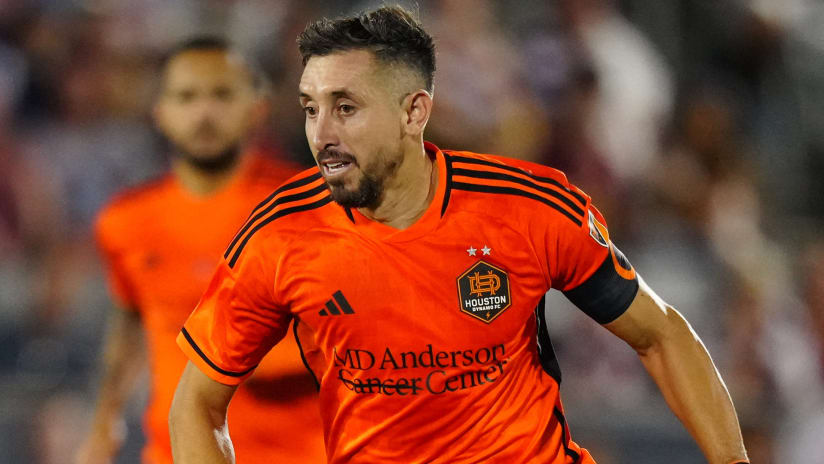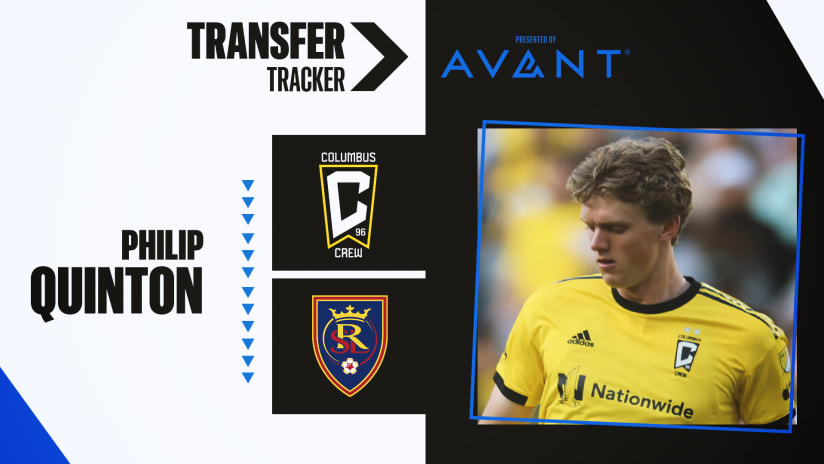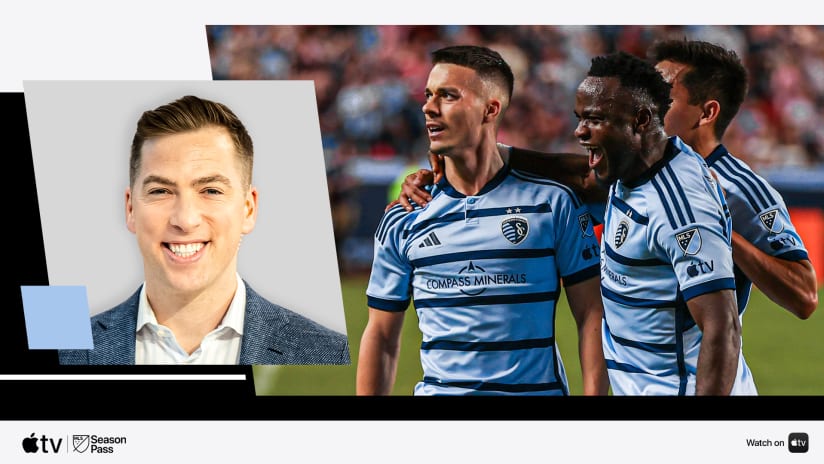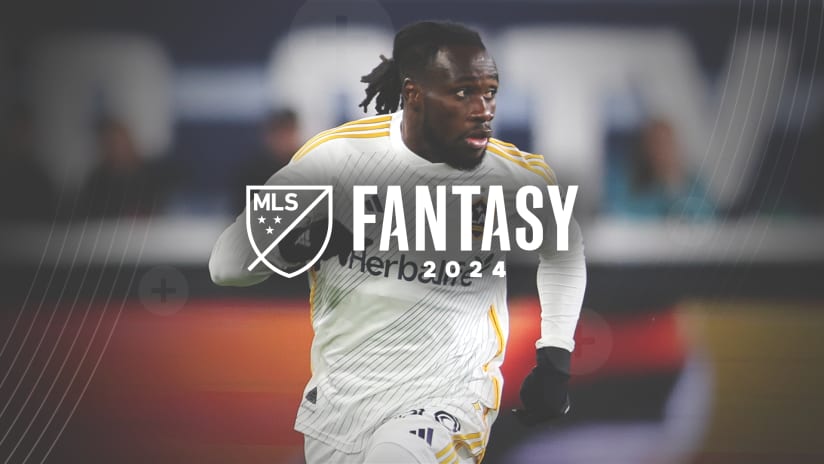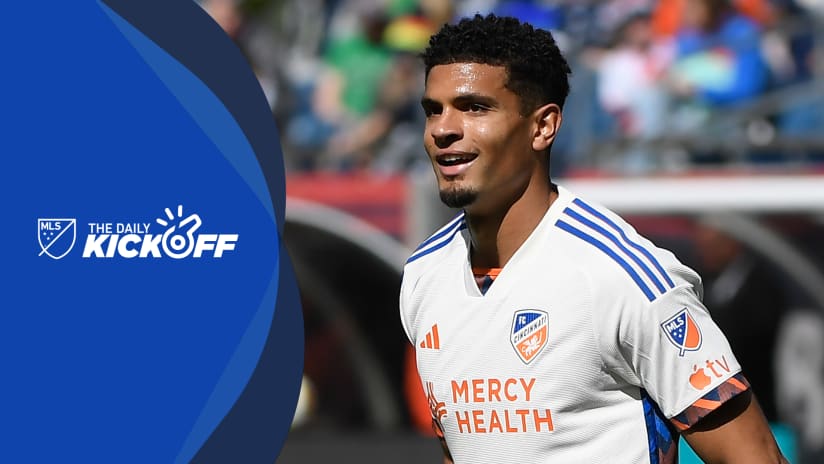The New York Red Bulls find themselves down one goal in their Eastern Conference Semifinal series against Montreal Impact going into the second leg on Sunday (4 pm ET; ESPN, ESPN Deportes in US | TSN5, RDS in Canada).
The Red Bulls have been one of the best teams in the league since Jesse Marsch took over, accruing the second-most points of any team (117), employing an energetic, high-pressing system to great effect. Marsch has consistently used what can be described as a 4-2-3-1 formation, but there is a dynamism to the Red Bull style that means they almost take two shapes, depending on if they are in possession or not.
When the Red Bulls are firmly entrenched in the opposition half, they will push both fullbacks into the final third and drop one of their defensive midfielders back with the center backs, so that there are three players covering for transition and seven committed to attacking.
This allows the fullbacks to provide width, enabling the line of three attacking midfielders (Alex Muyl, Sacha Kljestan, Mike Grella) to stay closer together to both press and combine extremely well. At the hub of that line of three is Kljestan, a Landon Donovan MVP finalist and 20-assist man this season.
Perhaps the quintessential Red Bull goal to demonstrate this is Bradley Wright-Phillips' opener in their 4-1 victory over New York City FC on July 24. At the 18:25 mark, right back Sal Zizzo pushes up and presses NYCFC into a turnover, after a misplaced pass.
15 seconds later the ball is at the feet of left back Connor Lade on the opposite side, also pushed up into the final third to provide width. While NYCFC repel the initial attack, all three Red Bull attacking midfielders are able play within the width of the 18-yard box, and when Red Bulls regain the ball, quick, inventive combination play and superior numbers in that space means that Kljestan can find Wright-Phillips to finish calmly.
This aggressive style of play has won the Red Bulls games and admirers, but the system can be susceptible to teams that are able to attack the space vacated by the fullbacks, particularly in transition. Unfortunately for the Red Bulls, ruthless transition attacking is a significant part of the Montreal identity, and they have the personnel, and pedigree in tournament play to be a danger to any team.
It's no secret that New York struggled to create chances in the first leg against the Impact. Kljestan had 98 touches, the most he had in a game all year, but he failed to create a single chance, which is the first time he has been unable to do so over 90 minutes this year.
When a No. 10 who has been so productive all year fails to have his usual statistical impact on a game, he is open to criticism. However, the Red Bulls have had a team-centered concept under Marsch and to focus on Kljestan’s purported shortcomings does a disservice to the complexity of the sport and to what has gotten the Red Bulls this far.
Although Marsch made noises throughout the week that Red Bulls would stay true to the team's high pressing, aggressive style, the on-field positioning of the Red Bull fullbacks indicated that the team had learned from last season’s elimination at the hands of Columbus Crew SC. In that series, they came home down 0-2 and were not able to turn it around. In Montreal last Sunday, when the Red Bulls had the ball, the fullbacks appeared to be playing with the positioning of the Montreal wingers in mind, as opposed to primarily providing attacking width. Take a look at Kemar Lawrence here:
Lawrence is clearly aware of Dominic Oduro, and his world-class speed, as he is able to disrupt a potentially damaging counter by staying behind him. Chris Duvall was also well behind the ball despite it being on his side when the Red Bulls were attacking. While this provided more security, it also meant that the attacking midfield trio had to provide their own width and could not always play as close together, thus reducing the effectiveness of the Red Bulls attack.
While Kljestan’s lack of chances created might be disappointing to some in the South Ward, there are always shades of gray with soccer. He provided a crucial clearance in the first half, denying Laurent Ciman a chance at another set-piece goal in the 30th minute.
Furthermore, his pass at 28:20 to Wright-Phillips shows that even without the full support of the fullbacks in the attack, he can figure out a way to create.
The statisticians might not have credited Kljestan with a key pass on this sequence, but it displays the vision, poise, technique and willingness to sacrifice his body for the cause that has contributed to making the Red Bulls a force the last two seasons.
We also cannot discount the Red Bulls' commitment to set piece situations, which includes Kljestan’s normally fantastic delivery. He tied for the MLS lead with 40 chances created from set plays this year, and has seen them score early and often in big games. New York led the league with 20 set-piece goals this season. Further cause for optimism comes from the fact that the Red Bulls have won all seven of Montreal’s previous trips to Red Bull Arena during MLS play, and only twice by a margin that would see them eliminated on away goals at the end of 90 minutes on Sunday.
Red Bulls fans should be focusing on the positioning of both the Red Bulls fullbacks and the Montreal wingers as the game takes shape on Sunday afternoon. Marsch will probably want to play a little more aggressively at home, especially coming in down a goal. However, it is essential that they don’t concede an away goal and finding the right balance with their outside backs appears to be the key issue in the game. It is unfortunate for New York that the Impact’s stylistic strength is magnified by the gaps created by the Red Bulls' commitment to attacking play.
One thing is practically guaranteed: if they are going to turn it around, Kljestan will likely be at the heart of it.
Matt Pavlich is a youth soccer coach in the New York City area who holds a NSCAA Advanced National badge. He is currently working with Asphalt Green Soccer Club on the girls side, and Martin Luther King high school on the boys side. He has worked for Opta since 2011, primarily focusing on MLS. He also played varsity soccer for Vassar College.


